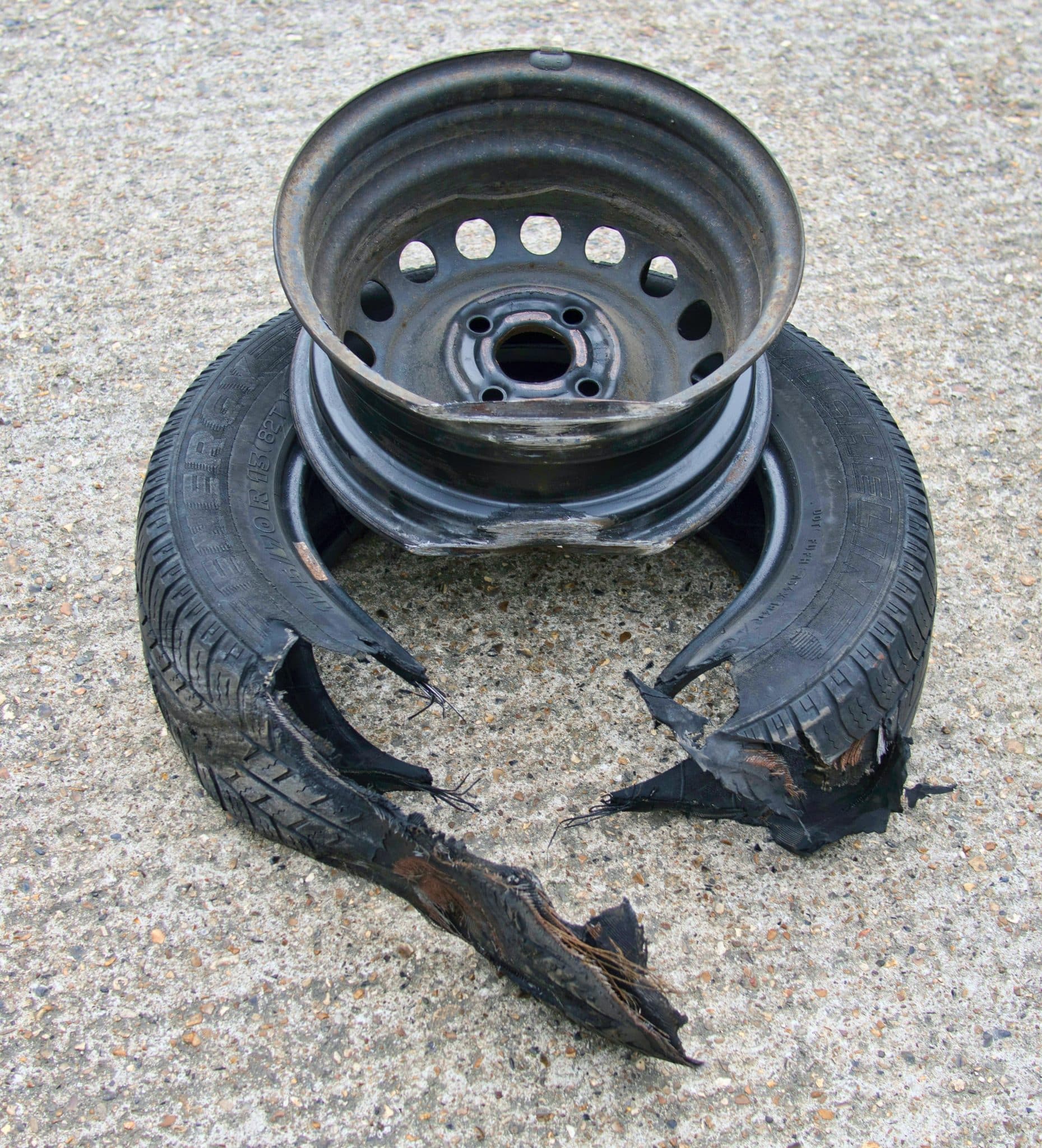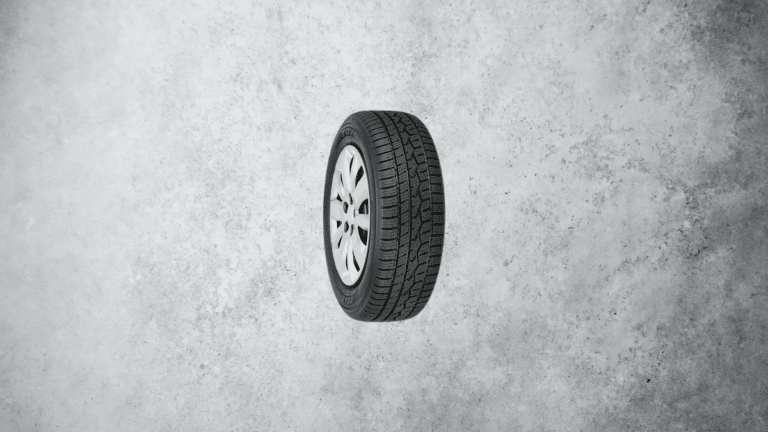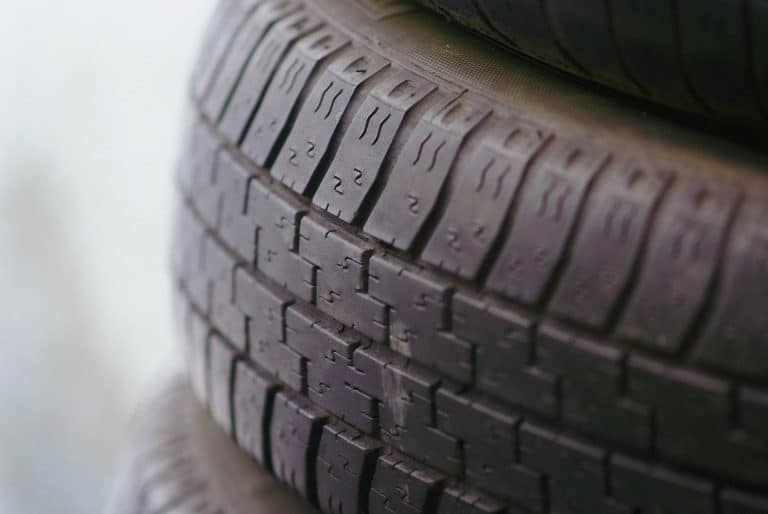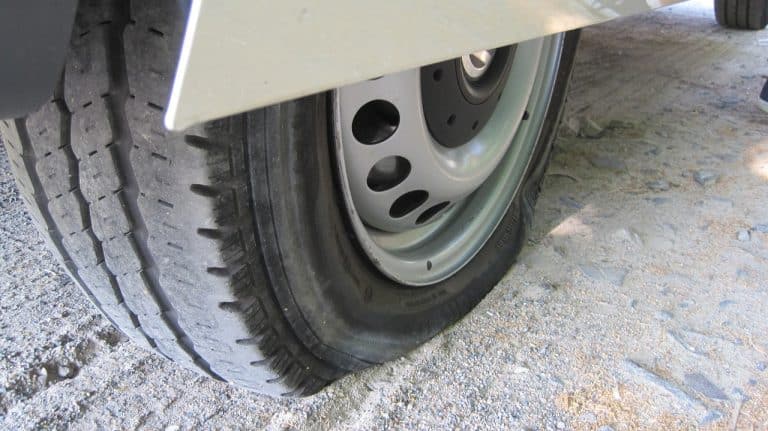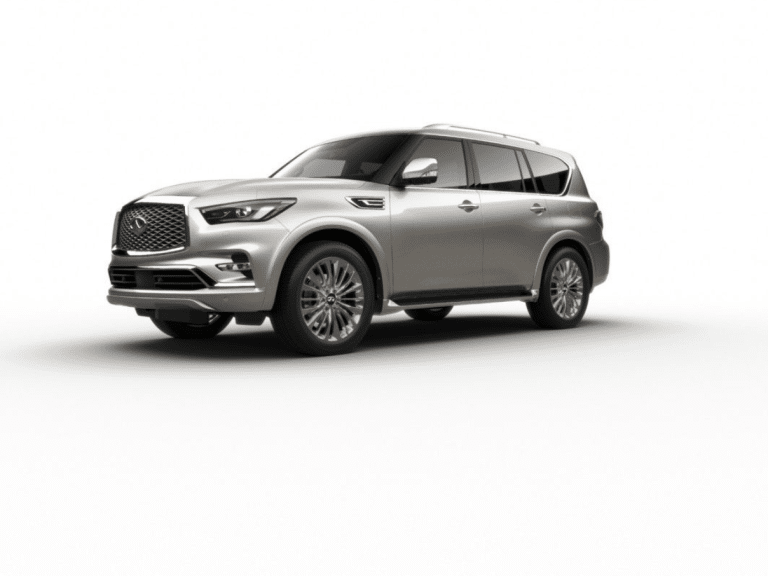How to Control a Tire Blowout
Getting from one point to another in a car is an eventless activity for many people. They get in the car, start it, get to their destination, and it’s a done deal. This sounds perfect, but in the real world, things aren’t ideal, and we are faced with some unexpected situations.
A common one on the roads is a tire blowout, which isn’t a fun thing to happen. Imagine driving on the highway, you hear the tire “exploding,” and you’re stuck with a car that’s either on the verge of going out of control or it’s already started, and you’re heading straight for the barrier.
This is dangerous and can result in severe injuries or even worse. Knowing how to control a car with a blowout and safely bring it to a complete stop is essential, which I’ll be teaching you today.
Before I begin explaining, there’s one thing to note. There are countless different situations that can happen, so I’d need to write a book to explain all of them. Therefore, this guide will be a bit more generic, covering the important aspects you must be mindful of to regain vehicle control.
Also, I already explained what a blowout is and how to prevent it in my previous guide, so check that out to learn more. Today, I’ll be covering the problematic part that happens immediately after the blowout.
Controlling a Blowout
Most people say that a blowout is sudden without any warning signs, and I agree with that claim partially. For a tire to blow catastrophically, it usually means that the internal components are giving away. Sometimes, that’s accompanied by some increased vibration, which you should be able to notice. They can be faint or quite noticeable. Also, they can happen seconds before, or you could’ve been driving like that for a while.
Another sign of a tire blowout is the noise. You may mistake the hissing noise from the air escaping the tire, but once the internal and external pressures equalize, you’ll definitely hear a flapping sound. That’s the tire or parts of it hitting the road, the wheel, and the rest of the components around it.
For the sake of this guide, let’s say you didn’t notice any of that, and you’re driving on the highway, and you notice the tire blow, so what should you do?
Remain Calm
The biggest mistake people make in these situations is that they begin to panic. It’s in our nature, I get that, but remaining calm can be crucial to bringing the vehicle to a stop safely. Being calm in these situations means you can think rationally and assess the conditions.

Yes, all of this happens in a fraction of a second, so having a clean mind is crucial. I know I sound like a yoga instructor, but believe me, being calm will help you analyze the situation much more quickly and react sooner. This can be the difference between keeping the car straight and ending up in a ditch.
Both Hands on the Wheel
I’ve seen many people having one hand on the wheel, even on the highway, just cruising along. It’s not the end of the world, but it can be crucial in these situations. Regardless of your reflexes, it will take a fraction of a second to react to the blowout and put the other hand on the steering wheel. In that time, if you’re not holding it firmly even with one hand, it can turn to one side, especially if one of the front tires has a blowout.
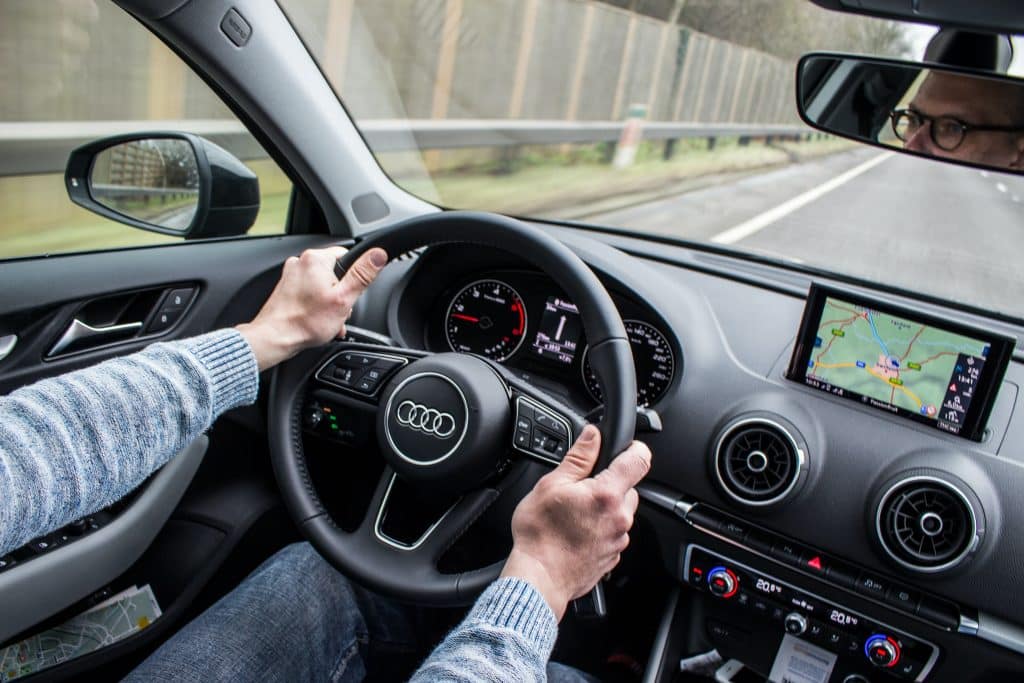
This is why keeping both hands on the steering wheel in the correct positions is a good idea. By doing this, you ensure that in the event of a tire blowout, you’ll save milliseconds, which don’t seem like a lot but can be crucial.
Another important thing to know is that in this situation, you should hold the steering wheel tight. There may be a bit of a wrestling match to keep it straight, but if you manage to do that, then half of the job is already done.
Accelerate then Brake
I know this sounds counterintuitive, but there’s a good reason for this. In an emergency situation, the natural reaction is to slam on the brakes and bring the vehicle to a stop as quickly as possible. That’s true for many situations, but not when it comes to a tire blowout.
After the initial bang and the tire is a goner, you should keep your right foot on the accelerator and ease off gradually. In some situations, adding a bit of gas can help you get the car straight enough to start the deceleration process. Unfortunately, I cannot tell you the rules to go by and how to determine if you need to accelerate or not. It will depend on many factors.
Regardless of that, easing off the accelerator pedal is essential, and you should do that gradually. Doing it abruptly will additionally destabilize the vehicle because, at this point, you have a blown tire that creates a drag on one side. Combining that with shock from lifting your right foot and the engine braking can further destabilize it.
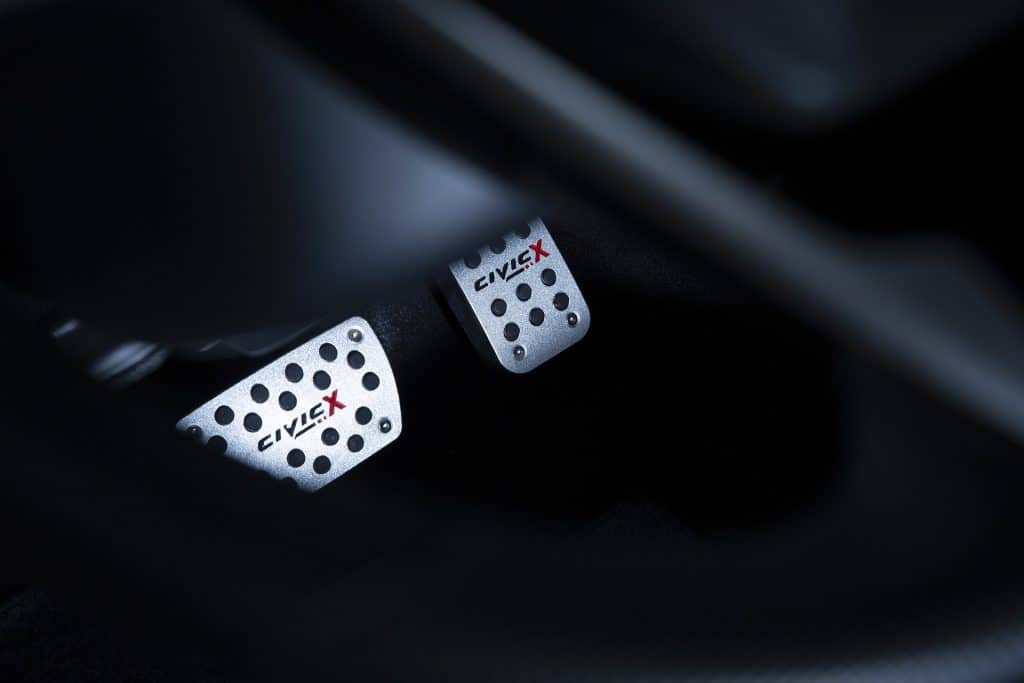
Once you’re completely off the gas, it’s time to apply the brakes. Again, the crucial thing here is to be gradual with the inputs. Considering that you have a blown tire, even without the brakes, once you let go of the gas, the car will slow down quicker than usual.
Start to apply the brakes gently and increase the pressure. Ensure you’re not too aggressive to the point where a tire may lock up. Continue applying the pressure and try to steer the vehicle as far right as possible until it comes to a complete stop.
Since the example I’m using is for driving on the highway, you’ll want to pay attention to other vehicles around you. The whole point of this is to make sure that you get the vehicle stationery as safely as possible. This applies to you and everyone around you.
A helpful tip here is to use the hazard lights. If you get a chance, turn them on so the vehicles behind you can see that you’re not just cruising down the highway and have a problem. People who pay attention to the road in front will know it’s a sign to slow down or be extra cautious.
What to do after a blowout?
I’ve explained what happens when a tire blows and how to stop your vehicle safely, so what’s the next step? Naturally, the first thing you should do is to get out of the vehicle and assess the damage. You should do this only if it’s safe to do so.
Depending on the situation, despite having the hazard lights on, it’s a good idea to put reflective cones or triangles on the road further behind the car. This will inform incoming traffic that there is a reason for them to drive more cautiously.
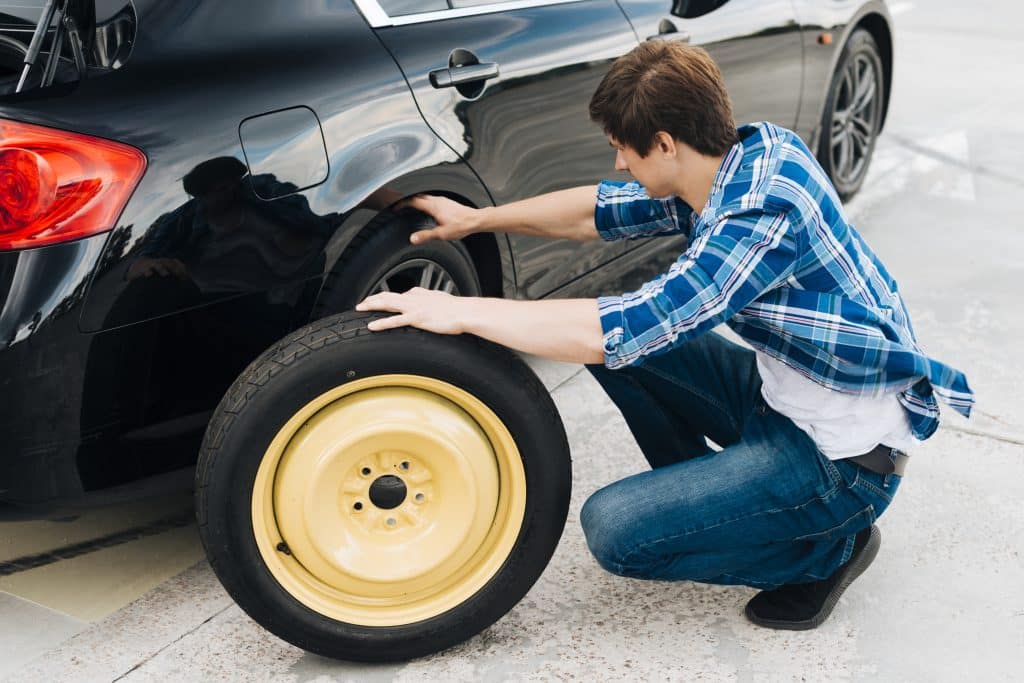
Now let’s talk about the damage and fixing it. Cars with a spare tire won’t be stranded for too long, regardless if we’re talking about a full-size or a donut spare tire. You can jack up the car, replace the tire, and head to the nearest tire shop. Owners with a repair kit won’t be so lucky. Kits won’t fix a tire that’s been ripped to shreds, so you’ll need to call for one of those mobile tire services or a tow truck.
What kind of damage can you expect from a tire blowout?
Like most of the things I’m covering today, there is a difference from one situation to another, so it’s not a straight answer. In most cases, the biggest damage is to the tire, which is probably disintegrated. The second part that takes a hit is the rim.
Regardless of how quickly you get your car to stop, you still drive with the wheel touching the road. You’re looking at least a bent wheel, which some tire shops can easily fix. In a worst-case scenario, the wheel may be too far gone, so you’ll need to consider replacing it as well.
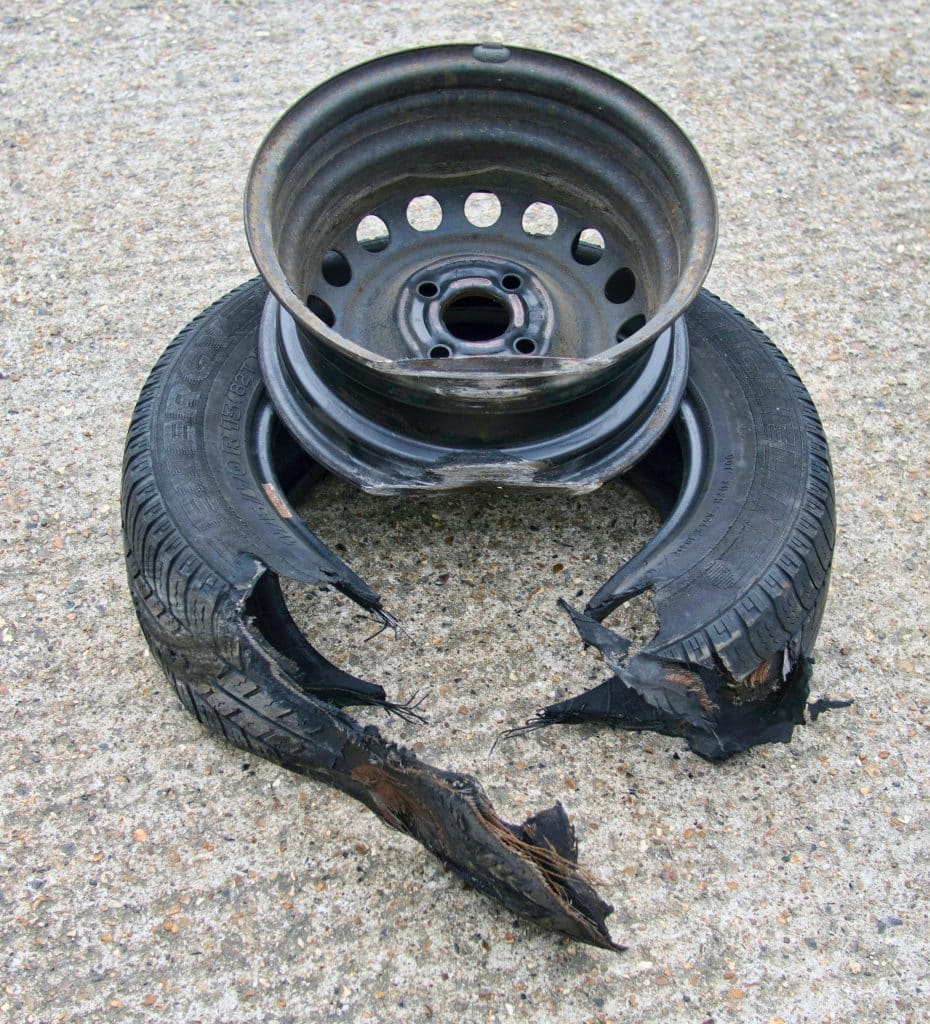
As for other components, it’s very rare to see damage to other parts around the wheel and tire. If some bigger pieces of the tire flap around as the wheel turns, they may start hitting other components from the braking system or get lodged somewhere. It’s not something to be too worried about because the rubber can hardly do any damage to the metal parts.
Disclaimer
You’re reading the guide, thinking that it’s a terrible thing to happen, and you’re right. The most important thing I must mention is that it’s not always as violent as it may sound now. For this example, I used the worst possible scenario: driving on the highway and the tire tearing itself to shreds, most likely somewhere at the sidewall. There are situations where things will be “gentler.”
You may be driving around town at slower speeds, so even though there is a chance the car will lose control, it won’t be as bad as on the highway. With that said, it doesn’t mean that you should ignore all the tips and pointers I just said. I’m just trying to explain that not all situations are the same.
Also, when it comes to losing control, there will be a difference depending on which tire has a blowout. A car with a front and a rear blown tire will “behave” differently. If you get a blowout in one of the front tires, you’ll notice the car pulling to one side, and you’ll notice that in the steering wheel. With rear tires, it will seem like the tire is “dragging,” but the car will still try to change direction.
Conclusion
A tire blowout isn’t something people want to experience in their lifetime. I’ve been in that situation, and believe me, it’s not fun, especially when you consider how little time you have to react to that.
If you find yourself in this situation, it’s important to remain calm and follow my instructions on getting the vehicle stopped safely. Some of them will go against your natural instincts, but they are good advice. Going for the instinctive reaction may turn a bad situation into a worse situation.
As always, stay safe and take good care of your tires so that they can take good care of you.
